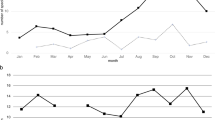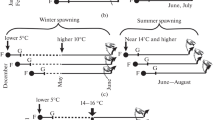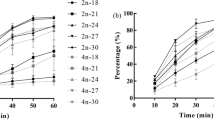Abstract
The brine shrimp Artemia exhibits two reproductive modes: 1) oviparity, producing diapause embryos; and 2) ovoviviparity, producing free-swimming nauplii. Previous studies have suggested the existence of a critical stage that determines the reproductive mode. Physicochemical factors, such as photoperiod, temperature, and salinity, have been suggested to irreversibly affect the reproductive mode of oocytes during this critical stage. In this study, experiments were carried out using a photoperiod and temperature-sensitive parthenogenetic Artemia clone where maternal Artemia were shifted bidirectionally between ovoviviparity (18 h L:6 h D, 27°C) and oviparity (6 h L:18 h D, 19°C) culture conditions. In the main experiment (Artemia shifted at six different stages including the post-larva II to adult II), the reproductive mode of first brood was converted when shifting was performed on post-larva II and III but was not converted when females were shifted after post-larva III. A supplementary experiment further revealed that the reproductive mode of first brood could be altered when shifting females at an “early phase of post-larva IV”, characterized by a developing ovisac reaching the middle of the third abdominal segment, ventral spines, and some oocytes growing larger than the others. In both experiments, reproductive modes of the second brood were significantly affected when the shifting was performed on post-larva IV. These results suggest that the critical stage for inducing oviparity and embryonic diapause is at the previtellogenic stage of oocytes, or at maternal “early phase of post-larva IV” for the first-brood offspring. During this stage, differential gene expression patterns of the two destined oocytes may be triggered by the token stimuli signals received by the oocytes.
Similar content being viewed by others
References
Abatzopoulos T J, El-Bermawi N, Vasdekis C, Baxevanis A D, Sorgeloos P. 2003. Effects of salinity and temperature on reproductive and life span characteristics of clonal Artemia. (International Study on Artemia. LXVI). Hydrobiologia, 492(1–3): 191–199.
Alekseev V R, Hwang J S, Tseng M H. 2006. Diapause in aquatic invertebrates: what’s known and what’s next in research and medical application. Journal of Marine Science and Technology, 14(4): 269–286.
Alekseev V R, Ravera O, de Stasio B T. 2007. Introduction to diapause. In: Alekseev V R, De Stasio B, Gilbert J J eds. Diapause in Aquatic Invertebrates Theory and Human Use. Springer, Dordrecht. p.3–10.
Alekseev V R, Starobogatov Y I. 1996. Types of diapause in Crustacea: definitions, distribution, evolution. Hydrobiologia, 320(1–3): 15–26.
Berthélémy-Okazaki N J, Hedgecock D. 1987. Effect of environmental factors on cyst formation in the brine shrimp Artemia. In: Sorgeloos P, Bengtson D A, Decleir W, Jaspers E eds. Artemia Research and Its Applications, Vol. 3, Ecology, Culturing, Use in Aquaculture. Universa Press, Wetteren. p.167–182.
Brendonck L. 1996. Diapause, quiescence, hatching requirements: what we can learn from large freshwater branchiopods (Crustacea: Branchiopoda: Anostraca, Notostraca, Conchostraca). Hydrobiologia, 320(1–3): 85–97.
Cohen R G, Rodríguez Gil S G, Vélez C G. 1999. The post-embryonic development of Artemia persimilis Piccinelli & Prosdocimi. Hydrobiologia, 391(1–3): 63–80.
Criel G R J. 1989. Morphological study of the ovary of Artemia. In: Warner A H, MacRae T H, Bagshaw J C eds. Cell and Molecular Biology of Artemia Development. Springer, Boston, MA. p.99–129.
Dai Z M, Li R, Dai L, Yang J S, Chen S, Zeng Q G, Yang F, Yang W J. 2011. Determination in oocytes of the reproductive modes for the brine shrimp Artemia parthenogenetica. Bioscience Reports, 31(1): 17–30.
Gajardo G M, Beardmore J A. 1989. Ability to switch reproductive mode in Artemia is related to maternal heterozygosity. Marine Ecology Progress Series, 55: 191–195.
Jackson S A, Clegg J S. 1996. Ontogeny of low molecular weight stress protein p26 during early development of the brine shrimp, Artemia franciscana. Development, Growth & Differentiation, 38(2): 153–160.
Koštâl V. 2006. Eco-physiological phases of insect diapause. Journal of Insect Physiology, 52(2): 113–127.
Koštál V, Denlinger D L. 2011. Dormancy and developmental arrest in invertebrates. Journal of Insect Physiology, 57(5): 537.
Kurban A, Yoshida H, Izumi Y, Sonoda S, Tsumuki H. 2005. Pupal diapause of Helicoverpa armigera: sensitive stage for photoperiodic induction. Applied Entomology and Zoology, 40(3): 457–460.
Lavens P, Sorgeloos P. 1987. The cryptobiotic state of Artemia cysts, its diapause deactivation and hatching: a review. In: Sorgeloos P, Bengtson D A, Decleir W, Jaspers E eds. Artemia Research and Its Applications, Vol. 3, Ecology, Culturing, Use in Aquaculture. Universa Press, Wetteren. p.27–63.
Liang P, MacRae T H. 1999. The synthesis of a small heat shock/α-crystallin protein in Artemia and its relationship to stress tolerance during development. Developmental Biology, 207(2): 445–456.
Lopes F L, Desmarais J A, Murphy B D. 2004. Embryonic diapause and its regulation. Reproduction, 128(6): 669–678.
Nambu Z, Tanaka S, Nambu F. 2004. Influence of photoperiod and temperature on reproductive mode in the brine shrimp, Artemia franciscana. Journal of Experimental Zoology Part A: Comparative Experimental Biology, 301A(6): 542–546.
Poprawa I. 2005. The ovary structure, previtellogenic and vitellogenic stages in parthenogenetic species Dactylobiotus dispar (Murray, 1907) (Tardigrada: Eutardigrada). Tissue and Cell, 37(5): 385–392.
Provasoli L, Pintner I J. 1980. Biphasic particulate media for the parthenogenetic Artemia of Séte. In: Persoone G, Sorgeloos P, Roels O, Jaspers E eds. The Brine Shrimp Artemia, Vol. 2, Physiology, Biochemistry, Molecular Biology. Universa Press, Wetteren. p.231–238.
Triantaphyllidis G V, Poulopoulou K, Abatzopoulos T J, Pinto Pérez C A, Sorgeloos P. 1995. International study on Artemia XLIX. Salinity effects on survival, maturity, growth, biometrics, reproductive and lifespan characteristics of a bisexual and a parthenogenetic population of Artemia. Hydrobiologia, 302(3): 215–227.
Versichele D, Sorgeloos P. 1980. Controlled production of Artemia cysts in batch cultures. In: Persoone G, Sorgeloos P, Roels O, Jaspers E eds. The Brine Shrimp Artemia, Vol. 3, Ecology, Culturing, Use in Aquaculture. Universa Press, Wetteren. p.231–246.
Wagner T L, Villavaso E J, Willers J L. 1999. Diapause in the boll weevil (Coleoptera: Curculionidae): life-stage sensitivity to environmental cues. Annals of the Entomological Society of America, 92(3): 396–402.
Wang Z C, Asem A, Sun S C. 2017. Coupled effects of photoperiod, temperature and salinity on diapause induction of the parthenogenetic Artemia (Crustacea: Anostraca) from Barkol Lake, China. North-Western Journal of Zoology, 13(1): 12–17.
Zhang L, Lefcort H. 1991. The effects of ploidy level on the thermal distributions of brine shrimp Artemia parthenogenetica and its ecological implications. Heredity, 66(3): 445–452.
7 Acknowledgement
We are grateful to LIAO Qiuping (Tarim University) for her technical assistance in the histological protocols.
Author information
Authors and Affiliations
Corresponding author
Additional information
6 Data Availability Statement
The datasets generated during and/or analyzed during the current study are available from the corresponding author on reasonable request.
Supported by the Fundamental Research Funds for the Central Universities (No. 201762017) and the National Natural Science Foundation of China (No. 31760626)
Rights and permissions
About this article
Cite this article
Wang, Z., Asem, A., Okazaki, R.K. et al. The critical stage for inducing oviparity and embryonic diapause in parthenogenetic Artemia (Crustacea: Anostraca): an experimental study. J. Ocean. Limnol. 37, 1669–1677 (2019). https://doi.org/10.1007/s00343-019-8322-7
Received:
Accepted:
Published:
Issue Date:
DOI: https://doi.org/10.1007/s00343-019-8322-7




